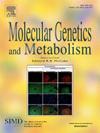Metabolic decompensation events among patients with propionic acidemia across the US: A large electronic medical record data study
IF 3.5
2区 生物学
Q2 ENDOCRINOLOGY & METABOLISM
引用次数: 0
Abstract
Propionic acidemia (PA) is a rare, inherited, metabolic disorder affecting amino acid metabolism. PA is characterized by periods of catabolism, which can lead to metabolic decompensation events (MDEs), commonly defined by metabolic acidosis and/or hyperammonemia. This retrospective study used TriNetX (1/1/2015–4/24/2022), a large longitudinal, electronic medical record database, to describe the clinical profile and burden of MDEs for patients with PA in the United States (US). Patients with known age were indexed on their first observed PA diagnosis on or after January 2015. Rates of MDEs, MDE-related clinical parameters, and healthcare resource utilization (HCRU) were assessed during the follow-up period (from index to death, end of data, or a 183-day gap in encounters). Among 269 patients with PA (55.0% adults, 51.3% male), 79 patients (29.4%) experienced ≥1 MDE in an inpatient (IP) or emergency room (ER) setting, and 128 patients (47.6%) experienced ≥1 MDE in any setting including the ambulatory setting. The rate of IP/ER MDEs was 0.53 per patient-year (PPY; 95% confidence interval: 0.36, 0.78); visually, rates followed a U-shaped distribution being higher in patients aged 0 to <2 years (0.58 PPY) and adults ≥18 years (0.72 PPY) compared to patients aged 2 to 18 years (0.22–0.34 PPY). Adults' MDEs commonly involved metabolic acidosis (86.7%) while pediatrics' MDEs commonly involved hyperammonemia (43.4–55.6%). Infection was the most common MDE trigger (63.3%); vomiting (45.6%) and seizure activity (41.8%) the most common MDE symptoms. A higher proportion of patients with MDEs died (21.5%) than those without MDEs (14.7%) during the entire study period; patients with MDEs also had a higher proportion of comorbidities and treatment usage than those without MDEs. This study provides the largest assessment of patients with PA across the US and documents the substantial morbidity with a focus on MDE burden, as well as mortality, highlighting clear unmet need.
美国丙酸血症患者的代谢失代偿事件:一项大型电子病历数据研究
丙酸血症(PA)是一种罕见的影响氨基酸代谢的遗传性代谢性疾病。PA以分解代谢期为特征,可导致代谢性失代偿事件(MDEs),通常定义为代谢性酸中毒和/或高氨血症。本回顾性研究使用TriNetX(1/1/2015-4/24/2022)这一大型纵向电子病历数据库来描述美国PA患者MDEs的临床概况和负担。已知年龄的患者在2015年1月或之后首次观察到PA诊断时进行索引。在随访期间评估mde发生率、mde相关临床参数和医疗资源利用率(HCRU)(从指数到死亡、数据结束或就诊间隔183天)。在269例PA患者(55.0%成人,51.3%男性)中,79例(29.4%)患者在住院(IP)或急诊室(ER)环境中经历≥1次MDE, 128例(47.6%)患者在包括门诊环境在内的任何环境中经历≥1次MDE。IP/ER MDEs率为0.53 /患者年(PPY;95%置信区间:0.36,0.78);从视觉上看,0 ~ 2岁(0.58 PPY)和18岁以上(0.72 PPY)的患者与2 ~ 18岁(0.22 ~ 0.34 PPY)的患者相比,发病率呈u型分布。成人多以代谢性酸中毒为主(86.7%),儿科多以高氨血症为主(43.4-55.6%)。感染是最常见的MDE触发因素(63.3%);呕吐(45.6%)和癫痫发作(41.8%)是最常见的MDE症状。在整个研究期间,MDEs患者的死亡比例(21.5%)高于无MDEs患者(14.7%);MDEs患者的合并症和治疗使用比例也高于无MDEs患者。这项研究对美国PA患者进行了最大规模的评估,并记录了大量的发病率,重点是MDE负担,以及死亡率,突出了明确的未满足需求。
本文章由计算机程序翻译,如有差异,请以英文原文为准。
求助全文
约1分钟内获得全文
求助全文
来源期刊

Molecular genetics and metabolism
生物-生化与分子生物学
CiteScore
5.90
自引率
7.90%
发文量
621
审稿时长
34 days
期刊介绍:
Molecular Genetics and Metabolism contributes to the understanding of the metabolic and molecular basis of disease. This peer reviewed journal publishes articles describing investigations that use the tools of biochemical genetics and molecular genetics for studies of normal and disease states in humans and animal models.
 求助内容:
求助内容: 应助结果提醒方式:
应助结果提醒方式:


